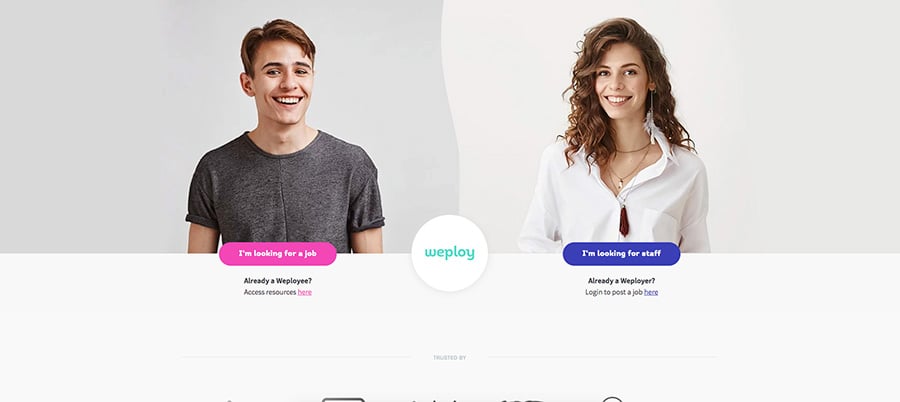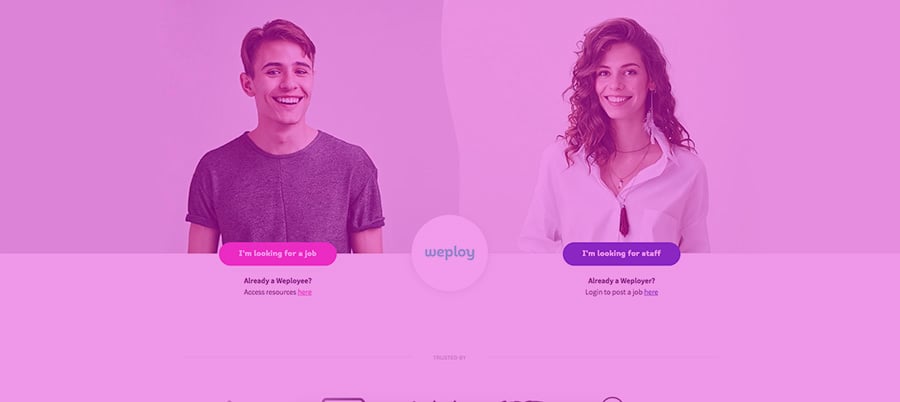We all know the best content strategy is fuelled by data as well as creativity. However, trying to find Aussie statistics can be near impossible amongst the sea of American data. For every slice of region-specific information, there’s another hundred or so articles about the big guys in America. Even when you do find those statistics relevant to Australia, trying to understand what they mean for your business is another struggle altogether.
Here we’ve compiled some essential Aussie statistics for 2016 and decoded ways to actually use the numbers . Ready to discover what the data says about the marketing opportunities that are out there for your business? Follow me!
As of December 2015, there are 14 million Facebook users in Australia. This number is set to rise.
— Social Media News
Facebook has remained the obvious champion of social platforms for a while. Last year was no exception. However, the rising numbers of new users proves that us Aussies are continuing to tag, like and share our way through the new year. As of 30th June 2015, there were 23,986,977 people living in Australia. Aussie Facebook users comprise 58% of the population.
Recent updates to Facebook are also changing the way brands and big publishers distribute their content. The newest feature, Instant Articles, allow businesses to publish content natively within Facebook. Through native content, Facebook is able to keep users within their app for longer. In essence, Facebook is becoming its own publishing house, and not merely a social platform.
While Buzzfeed and National Geographic have jumped on board pretty quickly, Instant Articles might not be a good fit for your business. What is essential for every business is a consistent Facebook presence. This is true for both B2C and B2B businesses!
55% of B2B buyers say they search for product/vendor information on social media.
— Meltwater
“Word of mouth” or “referral” is often regarded as the bread and butter of B2B business marketing. However, this is often misinterpreted as being a purely offline opportunity sources. In reality, word of mouth marketing appears online and offline. It could be anything from someone recommending a service, over the phone, to another person leaving a comment on a Facebook page.
Approximately 55% of B2B buyers search for product or vendor information on social media, meaning that an online presence is essential. Behind those businesses looking for different services are simply people, looking for the testimonials of other people online.
Unlike popular opinion, it’s clear that a healthy social presence is a goldmine opportunity for B2B businesses. People are already spending significant portion of their time online, whatever their age group. For B2B businesses still establishing their online presence, providing fun incentives for customers to leave a review is a great idea for driving engagement!
Daily Facebook video views more than doubled during 2015.—TechCrunch
You know what they say! A picture says a 1000 words, and this couldn’t be truer for digital content. Everything from great photography on your site to well-designed and branded short videos make an enormous difference in convincing and converting potential customers. 2016 is set to be the year of amazing visual content.
In 2015, video views on Facebook skyrocketed. For marketers, Facebook presents another video publishing platform, competing with YouTube and Vimeo. Consider creating content that:
- Follows the “Less is more” mantra — Quality videos are always better than long, low-quality videos.
- Uses humour — On a platform where puppy videos and cooking clips dominate, a touch of humour is often helpful.
Consider experimenting with publishing videos natively to Facebook. Also, repurpose evergreen content into fun, visual and snackable content, to save you time and engage new viewers.
Travel related social networks experience significant increases in engagement during the summer months.
— Social Media News
The travel industry is one of the richest for finding user generated content across social media. In particular, travel related social networks are set to rise, especially over the Summer months when Australians are wandering abroad. Instagram alone, as a highly visual medium, boasts 5 million monthly users (the 4th most popular social platform in Australia behind Facebook, Youtube and Wordpress.com).
Tripadvisor, as a hub for online reviews for the travel industry, currently boasts 2,200,000 Australian users. With summer still in full swing, this number is set to rise. If your business is within the travel and hospitality sector, then establishing a consistent presence is helpful. Responding to reviews and questions goes a long in building a sense of trust around your brand. Furthermore, businesses that respond to genuine poor reviews are more likely to turn an unhappy customer into a potential brand advocate.

Social media continues to transform the travel industry... Image credit: Giphy
49% of Australian marketers publish content either daily or multiple times per week. — Content Marketing Institute
As of 2015, approximately 49% of Australian marketers regularly publish content on their business website. As the internet continues to become oversaturated with content, on every imaginable topic, marketers are increasingly under pressure to create engaging and “click worthy” content. Visual content, including infographics, is one way in which marketers are attempting to create more engagement than a series of blog posts normally would. Changing format, into video and other visual content, is an effective method of repurposing blog content and creating more effective social campaigns.
Google remains the preferred search engine for Australians
— Stat Counter
See all Search Engine usage rates here:
- Google 93.62%
- Bing 4.36%
- Yahoo 1.28% and
- others 0.75%.
With the vast majority of Australian internet users still Googling away their problems, Google updates are an important feature for marketers to keep on top of.
For example, Google’s 2014 Pigeon update affected the way Google provided geography specific results for users. Managing a business’ presence on Google maps therefore became ever more essential for ensuring a website appeared in relevant searches.
More recently, Google rolled out a “mobilegeddon” update in April 2015. The changes in the Google algorithm allowed more mobile-friendly websites and more relevant app content to appear in search results. Therefore, the necessity for high quality, responsive web design continues to be a priority for businesses. For marketers wanting to stay up to date with recent changes to Google, resources such as the Moz Google Change History are helpful.
Desktop still reigns supreme for Australian internet use
— Margin Media
Despite the dominance of mobile devices, it’s surprising that up to 70% of Australians still use desktop. There’s still ample reason to make a fuss about responsive design (an essential component of your overall digital strategy). However, the fact that desktop still dominates is a reflection of the time and place in which people are using the internet: at work and at home.
The metrics show that in 9 months (March to December, 2015) there was an increase in mobile use and a slight decrease in desktop usage for internet browsing. You can see the stats below:
| March '15 | December '15 | |
| Mobile | 72.49% | 70.15% |
| Desktop | 27.51% | 29.85% |
Regardless, the transition to mobile devices continues, and the percentage of desktop users continues to decline. Responsive website design remains a key method for businesses to optimise their online presence.
LinkedIn, Facebook and Twitter are the most common platforms used by Australian marketers. — Content Marketing Institute
According to a Content Marketing Institute survey, Linkedin, Facebook and Twitter are the most common platforms used by Australian marketers.
This breaks down into:
- LinkedIn - 83%
- Facebook - 81%
- Twitter - 79%
- Google+ - 59% (increased by 12% from 2014)
However, the actual number of active users for each platform do not correlate with their use by marketers. For example, there are 7 times as many Facebook users as there are Twitter users. Yet, Australian marketers use Twitter as a marketing tool nearly as often as Facebook. To some extent, this may reflect the dominance of certain niche industries on Twitter. However, the disproportionate use of Twitter is an interesting phenomenon.
Where to now?
These statistics are certainly only the tip of the iceberg when it comes to what’s on the 2016 horizon, What trends do you expect to skyrocket throughout the year?



